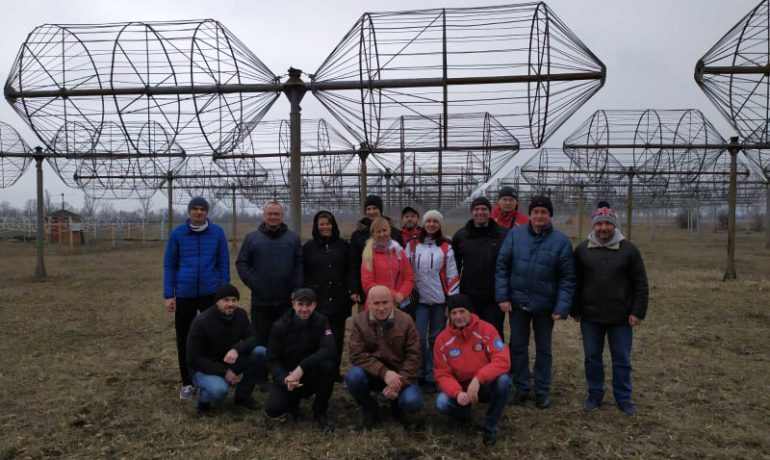Participants of the 25th Ukrainian Antarctic Expedition (UAE), which will leave for Akademik Vernadsky station at the end of March 2020, conducted a week-long training at the low-frequency observatory of the Department of Radiophysics of Geospace of the Institute of Radio Astronomy NAS of Ukraine located in the village of Martove near Kharkiv. The training lasted from February 29 to March 6, 2020.
Scientists who will go to Antarctica for a year were familiarized with the measurement complexes installed at the Ukrainian Antarctic station, since they are similar to those located at the low-frequency observatory in Martove. This observatory measures in our latitudes the same atmospheric and the near-Earth space parameters that are investigated at Vernadsky.
“During the classes, lecturers demonstrated to future polar explorers the principles and results of operation of magnetometers, similar to those installed at the Antarctic station. In particular, the magnetometric complex was examined, which sends data from Akademik Vernadsky station to the international network Intermagnet and helps to study how magnetic storms are spreading around the planet, – said the training organizer, Head of the Department of Radiophysics of Geospace of the Institute of Radio Astronomy NAS of Ukraine Andriy Zalizovsky. – Another type of devices is Ukrainian-made induction magnetometers. These supersensitive devices record Schumann resonance signals resulting from global thunderstorm radiation. The magnetometers form a global network, elements of which, in addition to Martove, are also installed at Akademik Vernadsky station and in the Arctic, in the Arctic University of Norway – the partner of the Radio Astronomy Institute.”
Thanks to the presence of polar points where the interference level is minimal, the network allows patrolling thunderstorm activity on a global scale.
During the training geophysicists who became part of the 25th UAE received information on how to process data from a digital ionosonde, high-frequency receivers, meteorological stations, and other devices. Information obtained using this equipment helps to monitor the state of the near-Earth environment. This is relevant not only for basic science, but also for ensuring high-quality radio communications, reliable operation of GPS positioning, and helps to establish a backup communication channel with airplanes and the like.
In addition, the 25th UAE team visited the village of Grakove, where they got acquainted with the work of the world’s largest decameter wave radio telescope.
A significant part of the training was devoted to theoretical lessons – lectures on the legal status of Antarctica, environmental legislation requirements, safety measures at the station and the like.
Participants of 25 UAE who were in previous expeditions shared their experience with those who are going to work on the icy continent for the first time. “We discussed the problematic situations that may arise during the wintering, studied how the station’s buildings are arranged and discussed the safety issues”, – said geophysicist Yuri Otruba, who this year is going for his sixths wintering and will be the head of the Akademik Vernadsky station.
It should be reminded that the participants of the 25th UAE were selected in the open competition, which the NASC holds for the second time.
This is already second wintering, when in the expedition the principle of gender balance is observed: in the 25th UAE, as well as in the 24th UAE, which is now working in Antarctica, there will be two women. At the end of March 2020 the biologist Ievgeniia Prekrasna and Anna Soina, an employee of the Institute of Radio Astronomy of the NAS of Ukraine (Kharkiv), will leave for the station.
Photo: participants of the 25th UAE get acquainted with the work of the world’s largest decameter wave radio telescope.


